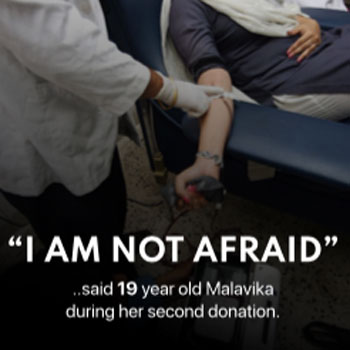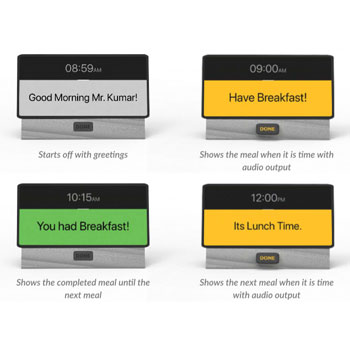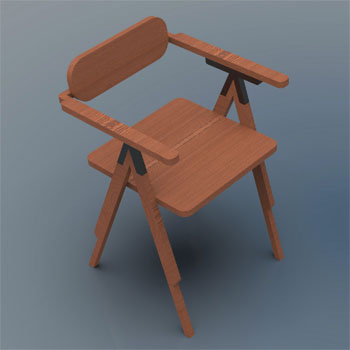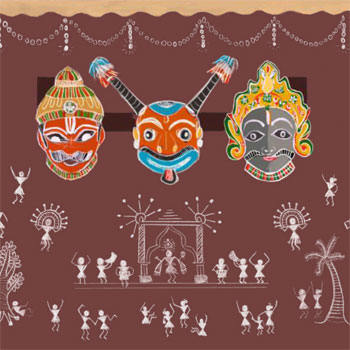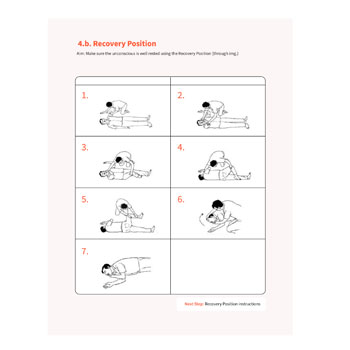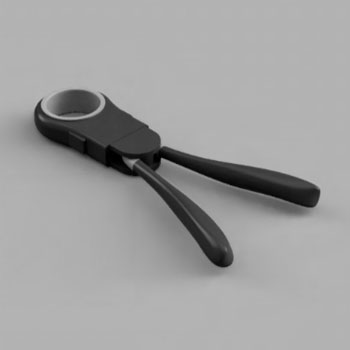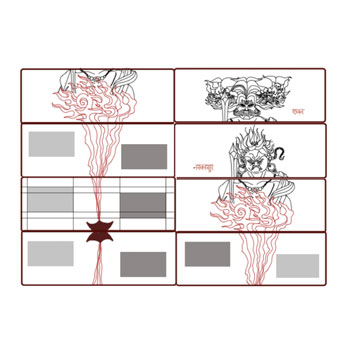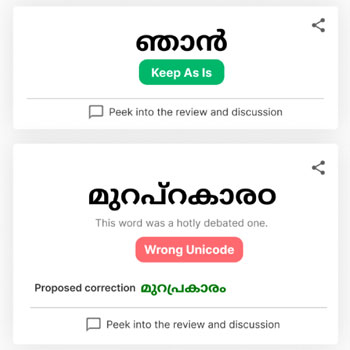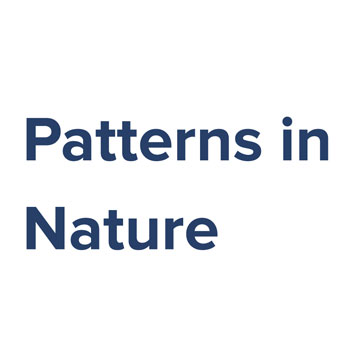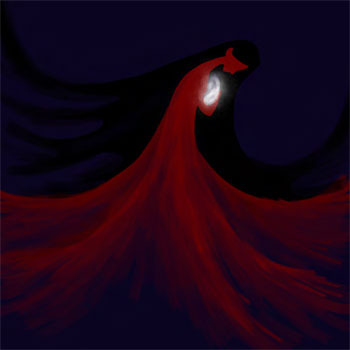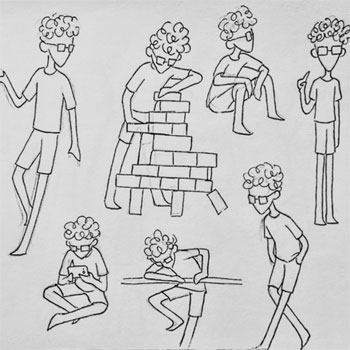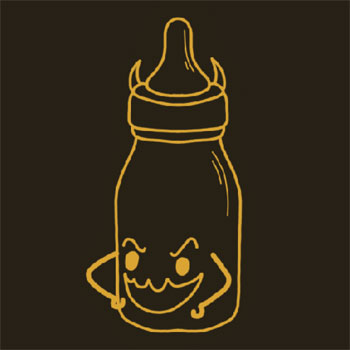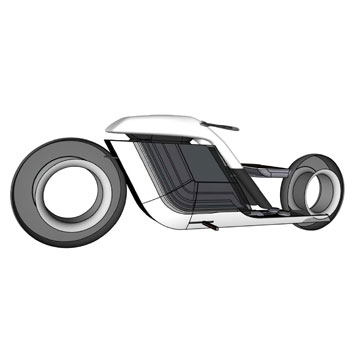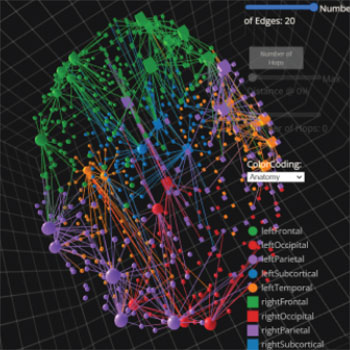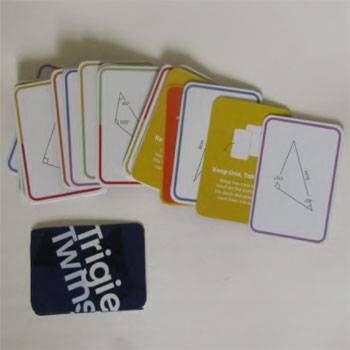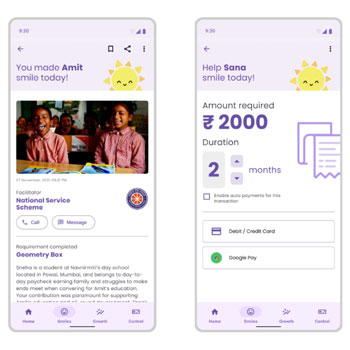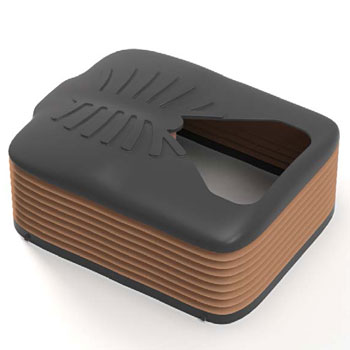B.Des
Batch 2018-2022
(38 items)
B.DesBatch 2018-2022
(38 items)
(38 items)
Design Strategy to enable more periodic blood donations in India to tackle the current shortage of blood
by Anagha Aneesh
by Anagha Aneesh
India is currently facing a shortage of blood due to the lack of voluntary donors and the lower frequency of periodic donors, as they are concerned about the safety regarding donations after the pandemic. A major fraction of the adult population was found to be unaware of the requirement and the urgency of the situation and often give in to misconceptions leading to no donation. This project aims at understanding how to tackle the high demand and low supply of blood in the country and identify motivations that could aid the situation by studying the common trends and demographics of periodic donors and understanding the level of awareness that people have in this sector. The main objective of the study would be to devise how to bring in more first-time donors and encourage repeated donations to tackle the current shortage of blood in the country. Two types of studies, both qualitative and quantitative, were conducted. The findings from the study were mapped out and overlapped with the findings from existing literature to derive major conclusions.
Details >>Assistive Aid for the Elderly with Early Dementia
by Anagha Aneesh
by Anagha Aneesh
Memory loss is unusual forgetfulness, which is a persistent failure to remember. It results from changes in the brain and can be a normal part of ageing or a symptom of another medical condition or damage. It often goes undiagnosed mainly because people think their memory loss is not a big deal and sometimes because they do not want to be diagnosed as a patient with memory impairment. People with dementia were found to be less cooperative and to exhibit varying levels of confidence, leading to discord in the household. People with dementia face difficulties completing daily tasks and are often left being confused about whether a task is already done or not. They need constant attention from their carers to keep track of their activities, as repetition or skipping a particular activity, for example, taking medicine for blood pressure, may cause a major imbalance in their bodies with adverse effects. In such a case, an assistive aid that could make them more self-reliant, hence taking some of the responsibility off the carer’s shoulders, might make a huge difference in a dementia-caring household. This project aims at developing assistive aids for people falling under the first three stages of dementia to help them get through their daily routine while reducing their level of dependence on their caregivers. This report covers the secondary research on existing alternatives and past projects and primary research conducted on 15 subjects, the results of the research, and a suggested solution.
Details >>Web Experience to enable more Periodic Blood Donations in India to tackle the current shortage of blood
by Anagha Aneesh
by Anagha Aneesh
India is currently experiencing a blood scarcity due to a lack of voluntary donors and a reduction in the frequency of regular donors, who are concerned about the safety of visiting a facility and donating blood following the pandemic. A significant portion of the adult population is unaware of the need and seriousness of the problem and frequently succumbs to misunderstandings, resulting in no donation. By studying the common trends and demographics of periodic donors, as well as the level of awareness that people have in this sector, this project aims to better understand how to address the country's high demand for blood and low supply, as well as identify motivations that could help the situation. The primary objective of the study would be to devise how to bring in more first-time donors and encourage repeated donations to tackle the current shortage of blood in the country. Two types of studies, both qualitative and quantitative, were conducted. The findings from the study were mapped out and overlapped with the findings from existing literature to derive major conclusions. Based on these conclusions, the final output was created, which is a webspace that unifies existing platforms to provide a transparent experience for all user groups while making the general public aware of the necessity and benefits, clearing misconceptions, motivating and guiding the donors, and finally allowing the donation facilities to provide better outreach and experience to the donors. Evaluation criteria were also devised and planned for the future.
Details >>Designing a Retro Indian Office Chair
by Arjun Abhilash
by Arjun Abhilash
For my P1, I decided to make a chair. For this, I started out looking at a wide range of iconic chairs, and after discussing with my guide, I selected the Indian office chair by Piere Jeanneret. The project was to redesign this chair to make it modern. I researched a lot about the history and heritage of the chair. I also looked into different kinds of wood and joineries. I also did my parallel product study, which was mainly newer versions of the chair made by passionate studios. For ideating, I started out by exploring and trying a wide range of ideas. As I was exploring various concepts for the final design, I also started working with wood parallelly and made joineries and dowels so that I would have a better idea when I make the final chair. After the final concept was ready, I made a 3D model of the chair and then proceeded to make it out of wood.
Details >>Elderly friendly chair- Furniture design
by Arjun Abhilash
by Arjun Abhilash
For project 2, I decided to work on furniture for the elderly. After discussion with my guide, the project evolved into Chairs for the elderly. For this, I took interviews of the elderly and also did my share of secondary research. After I did my primary and secondary research, I got a lot of insights. This helped me to come up with my brief: design a chair for the elderly, which is very easy to get in and out of and is also very comfortable. Then I proceeded to do ideation, and from the ideation came the concepts. Then I made mockups of the concepts, and the final design of the chair was also ready. Then I made a full-size working rig to test.
Details >>Designing plastic lamp shades- Material design and exploration
by Avinash Manikandan
by Avinash Manikandan
Through the course of my college education, I have gotten disconnected from fiddling with forms and products. The design exploration project seemed like the perfect opportunity to revisit and satisfy my interest in this field. Amongst all the available options for material design, designing lamps and lighting fixtures was the obvious choice for me, as it offers the most freedom for exploration, with infinite possibilities for shaping light. I wanted to make sure I get the satisfaction of tangible output, and Prof. Sandesh believed in the same, making it an easy decision for me.
Details >>Making a Fictional Short Film- Based on the Book 'Wings of Fire'
by Avinash Manikandan
by Avinash Manikandan
Unlike the “Award Films” in Tamil/Malayalam cinema, my interest lies in telling a good story in a commercially successful way. This project is an attempt to understand the audience and what they appreciate. ‘Wings of Fire,’ the autobiography of Dr. A. P. J. Abdul Kalam, is the book that first came to my mind when I was thinking about what to write for my first fictional short film. There are multiple reasons for this choice, but the most important is the absence of any movie about this great person. The concept of the story is to have gripping, high-stakes walk-and-talk conversations, through which we learn about the strengths and weaknesses, the moral and psychological conflicts, and insights into the protagonist’s personal life, Abdul Kalam. My work as the filmmaker covers roughly the entire process, the three stages of production. I have also adopted the story structure proposed by John Truby in his book ‘The Anatomy of a Story.’
Details >>Nithya'- Co-creating a fictional short film
by Avinash Manikandan
by Avinash Manikandan
‘Nithya’ is a 25-minute fictional short film in Hindi. The film is about Abhimanyu, a 10-year-old boy who dislikes all girls, especially his classmate, "everyone's favourite," Nithya. But the only person he can complain to about this favouritism is his caring and jolly mom, a young divorcee who is under the pressure of having to get remarried. Most student films are experimental, ambitious, slow, and “deep” without a cause. We wanted to make a short film that deliberately stuck to the basics of a simple and dramatic plot—focusing on delivering all the different emotions and energies that actors can bring while trying to ground it in our relatable society. The film is a blend of energy, humour, and silliness, along with hard-hitting emotions, pain, and finally, hope.
Details >>Infographic on Warli Festivals being celebrated by their Community
by Drishti Das
by Drishti Das
The project aims to document, classify, and experiment with information visualisation of cultural events in India. In this project, I focus on how the Warli community of Palghar district celebrates their traditional festivals by depicting traditional Warli paintings on their house walls. I started by revisiting and analysing our old project. With the project aim/motivation in mind, I collected more information about their culture through secondary research and organised the data according to the decided relevant factors for the visualisation, then explored some ideas. The final output communicates the ways these festivals are celebrated in Warli culture by depicting the traditional Warli paintings on the walls of their houses, with people and decorations in the background, mimicking their household during that occasion. It serves as a way of exploring their culture for newbies to lightly get introduced to their culture.
Details >>Vocabulary Memorization Application for Hindi Medium School Students
by Drishti Das
by Drishti Das
The English language plays an important role in today’s world. In most Hindi Medium Schools, English is taught as a second language from classes 5-7. The students are struggling with it given their lack of exposure, motivation, and current sociological conditions. The main aim of the curriculum is to enable students to communicate and understand the language effectively. In order for that to happen, the first step is to learn the script. The second important step is to master the necessary vocabulary words. This project aims at developing a solution that allows Hindi Medium School students from classes 5-7 whose primary language is not English to learn and memorise a certain number of new words over a set period. This report covers the secondary research on existing learning and teaching methods and alternatives currently in use and the primary research conducted on the target users and the English subject, the results of the research, analysis, and a suggested solution.
Details >>Introducing Emergency Response Care into School Education System
by Drishti Das
by Drishti Das
Road traffic accidents (RTAs) are regarded as one of the leading causes of grave injuries and fatalities in the world. How can the common public help out in taking immediate action based on the injuries? The overall aim is to enable the common public with information about emergency response care, particularly the bystander’s role within that, so that they can help out the victim during a road accident. The approach eventually shifted from having an intervention at the accident scene to incorporating it at the school level. The final output was a course design system about the bystander’s role in post-crash care, which included performing practical exercise and mock drills with a road accident situation and procedures to follow after that. It is a hybrid model of theoretical content and hands-on activities. It will be introduced in the school curriculum, with the theory parts taught along with the Road Safety chapter in NCERT. These exercises can be conducted in the classroom itself with the teacher being your guide and a manual with all the information and instructions about Emergency Response Care in Road Accidents.
Details >>Exploring growth patterns in bamboo slats using 3D printed joinery
by Kathir Eshvar
by Kathir Eshvar
During the course of this project, I attempted to combine different pieces of bamboo slats using 3D printed joinery to get interesting forms and patterns through the combination of both materials. I began with a few pieces and slowly refined and expanded them as the project went on, which I will be discussing in this report.
Details >>A product to help with restlessness symptoms of ADHD/Anxiety
by Kathir Eshvar
by Kathir Eshvar
Restlessness is a common symptom exhibited by those with both ADHD and anxiety disorders. This often results in them showing these symptoms and fidgeting in a public situation, which might be misunderstood as this often happens subconsciously and is the result of wanting to keep moving. And when they can’t do it worsens their anxiety or makes them frustrated. While people have found ways around this and have different things they use to fidget. This project aims to understand the problem space and design a product that might fit the user’s needs better. I conducted user research and drew upon my own experiences to get a deeper understanding and used that to arrive at a design brief, which I used to work on ideation and conceptualization and come up with the final product.
Details >>Exploratory Project on Constructive Toys
by Kathir Eshvar
by Kathir Eshvar
This report documents the process I followed during the course of my project and the final output I arrived at. It was an exploratory project where I combined different materials and tried to make a set of pieces that can be joined to construct different forms. It initially began with deciding the materials to explore with and then deciding the different methods of joining and what purpose for the toy to serve and progressed from there. The final output involves joining bamboo pieces using 3D-printed joinery to create different forms and shapes.
Details >>Image Transformation and Representation
by Krishna Nair
by Krishna Nair
Image Transformation and Representation is a visual communication project by Krishna Nair (Batch 2018–2022, IDC, IIT Bombay). The work investigates ways to reinterpret and represent images—transforming them in creative, meaningful ways—likely through digital or media formats. It explores how imagery can be manipulated to convey deeper narratives or alternative readings beyond the surface appearance.
Details >>Multilingual Storytelling
by Krishna Nair
by Krishna Nair
India is a country of many languages. In fact, it is a country that has been divided on the basis of languages. Each of these languages holds within it a treasure trove of knowledge and historical memory. This is reflected in the stories told in these languages. As part of the system design project done last semester, I’d been able to look at language learning within the context of the Indian Education System. The final output of this project was a community publication company for digital and print media called Bhaasha Co. Through this project, I have attempted to take it further and use storytelling as a means to bring people from different linguistic communities together. I was quite keen to bring together multiple languages in the same plot and space. Zines seemed to be an interesting way to achieve this. The use of such a medium that also made artistic collaboration easier fit in quite well with the Bhaasha Co. narrative.
Details >>Crowdsourcing Corpus Cleaning
by Krishna Nair
by Krishna Nair
Swarachakra Malayalam is a Malayalam text input keyboard developed by IDC, IIT Bombay, for touch input mobile devices. It has over 100,000 downloads on the Play Store as of now. The words typed by users through this keyboard are recorded in the form of a word list. The word list contains two data points, the word that was typed and the number of times (frequency) it was typed. The copy of the word list I was working with is from 2015 and contains 4,12,495 unique words with their frequencies. The premise of this project is a need to clean the word list (remove/correct errors and tag problem words) to get a usable database of corrected words and the nature of their corrections so that it can be further used to develop an autocorrection or text suggestion system.
Details >>Patterns in Nature
by Medhavi Parasar
by Medhavi Parasar
The purpose of this project is to create an easy-to-grasp video lecture on the topic “Patterns in Nature”. Considering that there are many different patterns, the focus of the video is on the ones most often used or thought of while designing things: Symmetries, Spirals, and Tessellations. The lecture explains these topics by showing natural objects as examples of the patterns and notes the visual effects each of them has from a design perspective. To further illustrate the point, examples of real-world designs implementing the patterns are also shown. To make the content more engaging, there are in-video exercises and post-lecture assignments based on the topics taught.
Details >>Communication and Learning Aids for Children with Autism
by Medhavi Parasar
by Medhavi Parasar
Autism Spectrum Disorder is a developmental disability that affects around 1 in 44 children. Children with ASD tend to have problems communicating with others and building healthy social relationships. There are many levels of ASD, and children on the spectrum may display mild symptoms or very severe ones. Severe ASD requires quite a bit of intervention, and aids have been made for children who have severe ASD and are non-verbal. However, children with moderate symptoms are usually not non-verbal but still struggle with certain aspects of communication and social niceties. The aim of this project is to focus on the children who have moderate ASD and build an aid that focuses on their social skills as well as communication skills, keeping emotional learning and understanding as the central point of focus.
Details >>Spatial Interfaces for Smart Homes
by Medhavi Parasar
by Medhavi Parasar
In the last few years, home automation products and systems have significantly boosted sales and usage. However, these products are still very rudimentary in application and can be “smarter”. Households have existing infrastructures that are not being utilised to their full potential. This project aims to utilise existing technology to create a system that anticipates the users’ needs and performs tasks to fulfil said needs as intuitively as possible. Several products exist in the market; however, the types of sensors required are not available in every device, and multiple devices (from different brands) tend to not work together seamlessly or are a part of a system, which tends to get expensive because many devices are required. Furthermore, none of the systems is able to look into their surroundings or anticipate user needs to the full extent.
Details >>Online lecture on Design Principles: Visual Semiotics
by Nidhi Deshmukh
by Nidhi Deshmukh
This project aims to teach the basics of semiotics to an online audience in a manner that’s engaging and easy to understand. The task was to structure and conduct an online lecture teaching one basic design principle to students who are just starting out in design. This was to be based on the course we took in our first and second year at IDC. It was necessary to keep the content simple and easy to grasp while being effective and easy to apply. Learning in an online environment takes a toll on the mind and can get boring and exhausting. The project explores creative ways to make online learning interesting and effective by relying on animations, interactive exercises, and a dry sense of humour.
Details >>Exploring narratives depicting morally ambiguous decisions
by Nidhi Deshmukh
by Nidhi Deshmukh
I often get into discussions and arguments with people where I try to understand the motivations behind everything the person says and does—especially when it’s a person with completely opposing views. This project started as a similar exercise to see if I could justify some behaviour that goes against my personal beliefs—to see if it was possible to understand and empathise with a character making unhealthy decisions because of their circumstances. This story treads the dangerous path of moral ambiguity, of what is acceptable and what isn’t in difficult situations. It makes the reader ponder over the uncomfortable decisions the characters must take when pushed into a corner and forced to take desperate actions. In this project, I attempt to break away from my usual visual style and create an immersive illustrated short story.
Details >>Illustrated story on the adolescent and young adult crisis
by Nidhi Deshmukh
by Nidhi Deshmukh
I have always struggled with imagining and planning for the future. I also struggled with all future-related decisions, like academic ones about picking a stream, field of interest, discipline, etc., or personal ones like what I want to do in the long run, where I want to live, etc. These doubts caused me a lot of distress and, eventually, depression and anxiety. I always chalked this up to me being a very cautious and anxious person by nature. I would and still can worry about everything. But in the past few years, I have noticed that such concerns also bother many, if not all, of my peers. It seemed odd how an entire generation of students is struggling to find these answers when their parents and older relatives never found this to be a significant problem and failed to relate to it. Most people learn to overcome this and lead better lives. But some fail to. And there has been an alarming rise in the number of people suffering from such lifestyle-related mental stress and consequential illnesses. The initial idea I started this project with was a very cynical take on our society’s exploitative, consumeristic ways and how that weighs down on the human mind. This idea, I believe, came from a place of great anger and frustration. But as I started this project and dug more deeply into this problem, I realised that there is a lot of anger and frustration already.
Details >>Gangaur festival of Rajasthan
by Niharika Kumawat
by Niharika Kumawat
This project attempts a documentation of the Gangaur festival of Rajasthan and its different aspects and significance. Gangaur is celebrated over 18 days and is one of the major festivals of Rajasthan. This report documents its most important highlights over these 18 days and various processes and important elements associated with it and their significance. There’s also an emphasis on the cultural folklore and songs associated with this festival, which forms an important part of numerous other Hindu festivals. Thus, it’s also an attempt to highlight the cultural vibrancy of Rajasthan as a state. The information and pictures collected and documented are sourced from various research papers, web articles, and from primary research with family and relatives currently celebrating this festival. The project documents an overview of the festival celebrated across the state of Rajasthan, but some of the finer details are based entirely on primary research, like the Pooja Vidhi, and the timeline is more specific to how it’s celebrated in the city of Jaipur. Thus, it might have slight regional variations across different cities. At the end, an infographic based on an illustrated timeline of this festival and its important aspects has also been designed.
Details >>Data Visualisation in Comparative Genomics
by Niharika Kumawat
by Niharika Kumawat
This project aims to deliver a data visualisation around the complex topic of “Comparative Genomics." The aim is to simplify a complex topic as such into a form that can be ingested by the general public with general insights and induce curiosity in them. The outcome is a web interface combining narrative and two interactive visualisations comparing the details of 30 widely known species of animals. A lot of static and dynamic tools exist to visualise genomic data, but most of them are often very complex for any non-field expert user to use. This project aims to offer an entry point to the general audience to get introduced to the field of Comparative Genomics and its basics. Two levels of comparison are undertaken in this project: one is general comparison of basic details with the first visualisation, and the second is comprehensive sequence comparison between the chosen species. The user can explore the details about the species of their interest by interacting with the tool. Genomics and comparative genomics, being a growing field of research, are important topics of interest, knowledge of which is important and can help individuals discover new opportunities in various fields.
Details >>Educational game design based on The Periodic Table
by Niharika Kumawat
by Niharika Kumawat
Chemistry is one of the most disliked science subjects in the Indian School scenario when seen from an understanding and memorization perspective. Students think of chemistry as an abstract realm they have to deal with. Periodic table is an important topic in the chemistry course curriculum, connected to many other topics in chemistry, and involves a lot of memorization. This project delivers an educational board game based on the concepts of “The Periodic Table” targeted at students in grades 9th–12th. Thus, the aim is to provide a tool in the form of a fun and engaging game to help students learn, practice, and memorize. The focus was on coming up with an actually fun game mechanic that motivates the student to play while also feeding them with the knowledge and concepts of the periodic table in a less abstract way. Jr. Mendeleevs is a game based on the periodic table of elements for the students of classes 9th–12th. Players take the role of researchers and compete with each other to solve the problem cards dealt to them and discover the elements based on hints given on the cards. To discover an element, they’ll have to earn and spend the resources and discovery coins given to them. The game can be played at home or school with classmates, siblings, or even parents. Players can also introduce problem cards of their own to increase the difficulty of the game once they’re well equipped with the basics.
Details >>Data visualization, genetics, genome & sequencing
by Niharika Mohile
by Niharika Mohile
Genomic sequencing has boundless uses in the world of science, especially in the field of medicine. Geneticists have by now managed to map out the entire human genome, along with genomes and genes from a vast variety of other organisms. This genetic data is computed, analysed, and pored over by scientists to draw results, a lot of which is easier done by making visualisations out of it. Before talking about the actual visualisations and their kinds, the paper attempts briefly to explain what genomes and genetic data are and how one gets to visualising them.
Details >>Infant and Maternal Nutrition
by Niharika Mohile
by Niharika Mohile
This report talks about the work I did over the autumn semester of 2021. It starts with an introduction to the topic of Infant and Maternal Nutrition, especially the problems in the area. It then shows my approach to the problems. We read about both primary and secondary data collection through doctors and other professionals in the field, as well as the collection of data from existing solutions. I then talk about my idea for a service design solution and then change course to a smaller solution that deals with videos made by CTARA, a body under IIT Bombay. Finally, I also present some posters I made for the project.
Details >>Data Visualisation of Disease-Carrying Genes along the Human Genome
by Niharika Mohile
by Niharika Mohile
DNA is the backbone of inheritance. It is DNA and RNA that carry all information possible into an organism since its conception, even before its birth. How to walk, breathe, grow, and exist is all programmed into an organism by its DNA. An explanation would be thus: the DNA of an organism contains several genes, each coding for a particular compound in the body, like an enzyme, hormone, metabolite, or structural protein, all of which affect how the body functions. This DNA is given to every organism by its parent(s), given to them by their parents. In our DNA, we carry millennia of history—e familyrelics of ancestors long gone. I knew my legs were slightly bow-shaped because so are m aunt’s, and her aunt’s. I knew it runs in the family. But it was in classes eleventh and twelfth, learnedI learnt what ‘running in the family’ actualy meant, and understood the mechanism behind it. I always loved the concepts of evolution and heredity, and genetics concretizationtisation of these concepts. Within genetics, learning about the existence of pedigre charts, and the simplicity of their funtioning, remains a highlight.
Details >>Designing a Porsche bike for the year 2050
by Pratyush Negi
by Pratyush Negi
In this project, I have attempted to design a bike for a car manufacturer. A challenge to create a bike for a company that has never made a motorcycle, and in this case Porsche. Being inclined towards cars more, I have been sketching cars more than bikes. For my P1, I wanted to do something interesting; hence, I chose to design a bike, which I knew would be challenging and fun. The project begins with the study and analysis of the brand Porsche. Dr.-Ing. h.c. F. Porsche AG, usually shortened to Porsche, is a German automobile manufacturer specialising in high-performance sports cars, SUVs, and sedans, headquartered in Stuttgart, BadenWürttemberg, Germany. In this explorative creative project, I create a scenario where a Porsche bike is being used in Mubai 2050. I use my understanding of Porsche design to try to create a bike capturing the essence and spirit of the brand.
Details >>“Ghar” an experimental short film
by Pratyush Negi
by Pratyush Negi
Ghar, a short film, is a film that emerges from a personal loss of my maternal grandmother (Naani), my only grandparent left after the loss of my maternal grandfather (Nana) in 2011, while I was 10 years old. Being too young to process the loss of my Nana, I grew up with the sole grandparent love of my Naani. An incredible person through and through, her heart and soul as pure as the glacial water of the Himalayas. Her unconditional love and warmth brought so much joy in all of our lives. With her unexpected demise in Feb ‘22 due to cancer, it was a grave shock for the entire family. It left a huge hole in everyone’s heart. While I was in Bombay, far away from home through the entirety of this, I was devastated with this news, as I couldn’t see her in her last moments nor could I visit her cremation being so far away from home. This film is an attempt to try and capture the essence of what I went through from the moment I got the news to the time I actually visited her place back home. A short film of 7:45 minutes is my first attempt at filmmaking. Planning, writing, and shooting a short film from scratch is a challenge I undertook in this project. This project is my attempt to understand the art and craft of filmmaking.
Details >>Visualisations in Affective Neuroscience
by Prita Raut
by Prita Raut
Affective neuroscience is an interdisciplinary field involving neuroscience and psychology where research involving data analysis is paving the way for new findings. This paper tells about the various types of visualisations in the field of affective neuroscience based on the nature of information. Neuroanatomy is of importance in this field, and based on that, the two broad categories identified are spatial and nonspatial visualisations.
Details >>Designing a Game based on Secondary School Mathematics
by Prita Raut
by Prita Raut
Math is a subject that plays a crucial role to help develop analytical and logical reasoning skills. However, it is perceived as a difficult subject by students, and there is fear and anxiety associated with it, which affects the interest students have in studying it. New ways of teaching and learning have come up that attempt to make studying enjoyable. In this project, I have attempted to design a game to practice math in a fun way. TrigieTwins is a board game for students of Std 7th and Std 8th to practice the concepts of properties of triangles and congruence of triangles. In this game, players make pairs of congruent triangles and try to collect groups marked on the board, along with trying to stop their opponent from winning by using power cards. This game can be played in the school with classmates or at home with siblings, friends, or parents. For anyone who doesn’t know the concept of congruence or properties of triangles, a quick revision guide is provided that can be referred to play.
Details >>Science Visualisation: Emotion and Affective Disorders
by Prita Raut
by Prita Raut
Affective neuroscience is an interdisciplinary field involving neuroscience and psychology. This project aims to design a data visualisation to simplify and present some of the research findings in the field of affective neuroscience related to similarities in animals and humans, behaviour and basis in neuroanatomy, and affective disorders in an attempt to explain the scientific reasoning behind them to the general audience through a web-based interactive infographic.
Details >>Generating Active Income for NGOs and Social Welfare Organisations Leveraging New-age Financial System
by Rishabh Kumar
by Rishabh Kumar
Primary research and secondary research was conducted to figure out trends, patterns, and details to understand the act of giving in this post-COVID digital context. Insights were derived from the data and literature review regarding the frequency and context of online transactions for people. The requirements and technical feasibility were cleared up by collaborating with NGOs and technical advisors, respectively. A range of ideas was generated across multiple trajectories, and selected ideas were condensed together to make the final concept aptly named “Project Daan," a mobile application designed to engage donors by allowing them to donate money automatically when they initiate a personal digital transaction by rounding it up and storing it in a virtual pot and donating it to complete beneficiary requirements by donating it to local bodies. The product is aimed at Gen-Z users who do frequent digital transactions, and the educational sector was taken for donation in the context of the project. The donor and NGO sides were detailed out for testing and evaluation with a wizard-of-oz high-fidelity prototype. A technical MVP was also created to show the working of automatic transactions.
Details >>The Sound Forest- Smartphone- enabled Modulation of Music Through Bodily Movements
by Rishabh Kumar
by Rishabh Kumar
Primary research and secondary research was conducted to figure out trends, patterns, and details to understand the act of giving in this post-COVID digital context. Insights were derived from the data and literature review regarding the frequency and context of online transactions for people. The requirements and technical feasibility were cleared up by collaborating with NGOs and technical advisors, respectively. A range of ideas was generated across multiple trajectories, and selected ideas were condensed together to make the final concept aptly named “Project Daan," a mobile application designed to engage donors by allowing them to donate money automatically when they initiate a personal digital transaction by rounding it up and storing it in a virtual pot and donating it to complete beneficiary requirements by donating it to local bodies. The product is aimed at Gen-Z users who do frequent digital transactions, and the educational sector was taken for donation in the context of the project. The donor and NGO sides were detailed out for testing and evaluation with a wizard-of-oz high-fidelity prototype. A technical MVP was also created to show the workings of automatic transactions.
Details >>Designing an Adult CPR Classroom Training Manikin
by Sarthak Kanchan
by Sarthak Kanchan
A new adult CPR classroom training manikin was designed, aimed to increase awareness and better educate the general civilian population about CPR, its benefits and risks. The Manikin comprises three components: a compressible torso, the compression piston, and a skin cover. The major aim of the project was to design a manikin that assists students regarding compression force and depth and hand placement. The manikin is designed to be compact and easy to set up and pack up, saving a lot of the instructor’s effort and time. The instructor can carry multiple manikins in a bag. A 3D CAD model with meticulously designed parts has been created keeping in mind manufacturing methods and constraints. This manikin focuses on compression-only CPR. Rescue breathing training features are yet to be developed. A working prototype for user testing and evaluation is to be made.
Details >>Visualising Lenz's Law with a dynamic diagrammatic representation
by Rishabh Kumar
by Rishabh Kumar
The paper aims to document my journey to visualize the scientific principle of Lenz law through a recreation of Faraday's Law of Induction. The paper documents my initial process of selection of topic, classification, and study of current visualisation methods, and then the finalised approach of visualization. The output was an interactive simulation created for the web, which allows users to interact with real-world elements and experiment with the values and direction of the current, reinforcing the specification of the phenomenon. Figma and AngularJS were used to build the simulation, which was later deployed to be tested out by the users.
Details >>